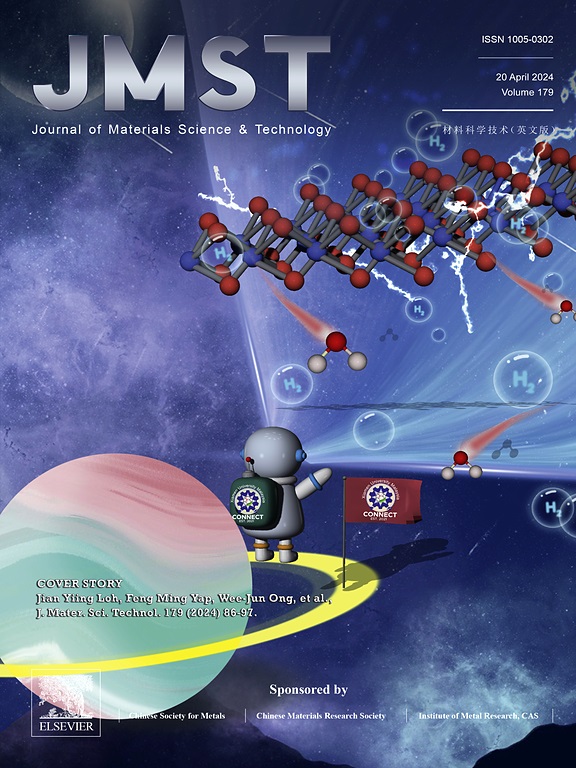梯度结构纳米晶-非晶铁基复合涂层具有优异的强度和耐磨性
IF 11.2
1区 材料科学
Q1 MATERIALS SCIENCE, MULTIDISCIPLINARY
引用次数: 0
摘要
梯度纳米晶-非晶纳米结构被认为是实现优异强度-塑性协同作用的有效途径,具有显著改善磨损性能。本文通过超高速激光沉积和重熔,成功制备了梯度纳米结构的铁基涂层。显微组织沿深度方向的演变分别表现为纳米晶、等轴枝晶和柱状枝晶梯度。值得注意的是,由于在重熔过程中冷却速度非常快,在最上层表面纳米晶层中可以识别出非晶晶界和碳化物纳米沉淀,其硬度和耐磨性最高(显微硬度为~ 1136 HV,磨损率为4.36 × 10−6 mm3/(m N))。其优异的耐磨性主要归因于纳米晶-非晶态的协同变形和梯度细化效应。同时,多尺度碳化物有效地抑制位错运动,进一步提高了不同深度的强度和耐磨性。这种梯度结构为高性能耐磨合金的设计提供了有希望的见解。本文章由计算机程序翻译,如有差异,请以英文原文为准。

Gradient structured nanocrystalline–amorphous Fe-based composite coatings with superior strength and wear resistance
Gradient nanocrystalline–amorphous nanostructures are considered to be an effective approach to achieve exceptional strength–plasticity synergy, with significantly improved wear performance. Here, gradient nanostructured Fe-based coatings were successfully fabricated by extremely high-speed-rate laser deposition and remelting. The microstructure evolution along the depth direction varies in a nanocrystalline, equiaxial dendrites, columnar dendrites gradient, respectively. Noticeably, amorphous grain boundaries and carbide nanoprecipitates could be identified within the topmost surface nanocrystalline layer owing to the extremely high cooling rate during remelting, which exhibits the highest hardness and wear resistance (microhardness of ∼1136 HV, and wear rate of 4.36 × 10−6 mm3/(m N)). The superior wear resistance is mainly attributed to the synergistic nanocrystalline–amorphous deformation and gradient refinement effects. Meanwhile, multi-scale carbides effectively impede dislocation motion and further improve strength and wear resistance at different depths. This gradient structure provides promising insights into the design of high-performance wear-resistant alloys.
求助全文
通过发布文献求助,成功后即可免费获取论文全文。
去求助
来源期刊

Journal of Materials Science & Technology
工程技术-材料科学:综合
CiteScore
20.00
自引率
11.00%
发文量
995
审稿时长
13 days
期刊介绍:
Journal of Materials Science & Technology strives to promote global collaboration in the field of materials science and technology. It primarily publishes original research papers, invited review articles, letters, research notes, and summaries of scientific achievements. The journal covers a wide range of materials science and technology topics, including metallic materials, inorganic nonmetallic materials, and composite materials.
 求助内容:
求助内容: 应助结果提醒方式:
应助结果提醒方式:


